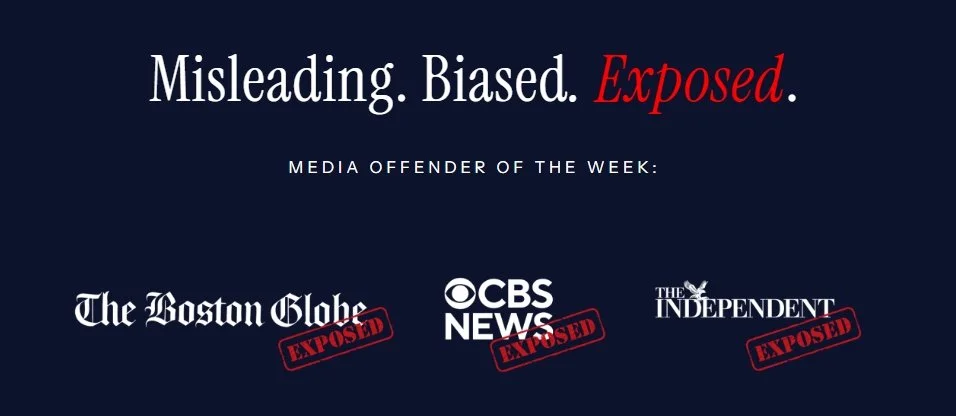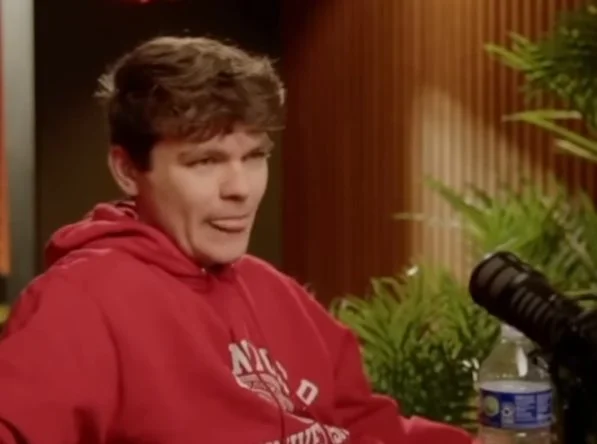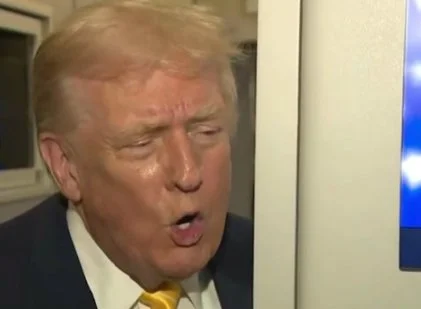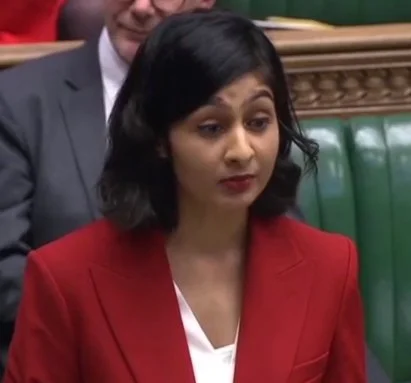America’s Trigger Point
The Turning Point We Refuse to Name
At the turn of the 21st century, America’s relationship with the gun changed. The country did not suddenly discover firearms. They had always been there, woven into its myths, its rural traditions, its sense of individualism. But something shifted around the late 1990s and early 2000s. Mass shootings, once shocking outliers, began to take on the rhythm of a recurring nightmare. Columbine in 1999 marked the beginning of a cultural script that subsequent shooters would study, imitate, and try to surpass. Within just a decade, the United States went from treating school shootings as a horrifying aberration to bracing for their inevitability.
Sociologists might call this a “cultural contagion,” when ideas and behaviors spread not simply through direct imitation but by saturating the social environment with meaning. Psychologists point to the way alienated individuals, especially young men, come to see mass violence as both an expression of grievance and a pathway to recognition. What makes this uniquely modern is not the gun itself. Americans had always had access to firearms. The difference is the cultural ecosystem that magnifies violence: 24-hour news cycles, online echo chambers, and a politics eager to weaponize fear.
Politicians quickly realized that every tragedy could be repurposed into a talking point, every grieving community into a backdrop for ideological theater. Gun rights absolutists and gun control advocates both learned to turn the bloodshed into currency. The effect has been a stalemate that is less about protecting lives and more about mobilizing voters. In the meantime, the shootings multiply.
The uncomfortable truth is that modern society is no longer the one the Second Amendment was written for, nor even the one gun owners of the mid-20th century inhabited. Urbanization, digital media, and social atomization have created conditions in which guns carry new meanings and new dangers. This is the turning point that supporters of gun ownership must reckon with: either take responsibility for cleaning house within their own culture, rejecting extremism, demanding accountability, supporting guardrails, or accept that the rest of society will eventually conclude that widespread civilian gun ownership is incompatible with modern life.
Loading fact...
The New Era of Mass Violence
In the decades before the turn of the century, firearms in America were primarily tied to identity, tradition, and geography. Guns were for hunting, for sport, or for rural self-defense. Shootings certainly occurred, but they were understood as either criminal incidents or isolated personal tragedies. What emerged after the year 2000 was something different: an epidemic of public, spectacular violence that targeted strangers and demanded national attention.
This shift is not explained by access to guns alone. Firearms were already widespread in the United States. What changed was the cultural meaning of their use. Sociologists describe how institutions and technologies reshape the context of individual actions. When a gun was fired in 1975, it was usually invisible to the public sphere. When a gun is fired in 2025, it has the potential to dominate the national conversation for weeks, amplified by cable news, social media, and political campaigns. The action itself has not changed, but its consequences have, and this shift encourages repetition.
Psychologists emphasize that mass shootings are rarely spontaneous. They are the product of planning, grievance, and a desire for recognition. The killers are often not just trying to inflict harm, but to make themselves part of a narrative. Columbine offered the first modern template, and subsequent shooters have treated it as a script. In this sense, the act of mass violence is both a performance and a signal. It says, "I exist, I matter, and I will be remembered." That psychological hunger for recognition intersects with a society that now guarantees attention to anyone who carries out such an atrocity.
Politicians and media figures also play a role in reinforcing this script. Each shooting becomes an occasion for partisan posturing, where leaders rehearse their talking points while avoiding meaningful reform. The language of “thoughts and prayers” on one side and “ban all assault weapons” on the other has become ritualized, almost theatrical. For the perpetrators, this dynamic is proof that their act will not only gain attention but will also feed into the nation’s most polarized debates. Their violence is guaranteed to matter.
The United States thus entered a new era, one where the public act of mass violence is no longer a shocking rupture in social order but a recurring feature of it. And as long as the social, cultural, and political structures continue to reward the act with notoriety, debate, and division, the pattern will persist.
Cultural and Media Amplifiers
Every mass shooting in America today unfolds in two stages. The first is the act itself, often over in minutes. The second is the performance of meaning that follows, stretched across hours of live news coverage, endless social media commentary, and the framing of politicians and pundits. In some ways, the second stage has become the point. The perpetrators understand this. They know that their names, manifestos, and images will circulate widely. The act becomes a ticket into infamy.
This dynamic did not exist in the same way before the late 1990s. Columbine was one of the first mass shootings covered wall-to-wall on cable television. It was not just reported; it was dissected, dramatized, and replayed in a loop. Sociologists have shown how this kind of saturation coverage creates a cultural script. Future shooters learn the story, internalize it, and sometimes deliberately reference it. The media does not simply describe reality; it participates in shaping it.
The rise of digital platforms only intensified this process. Facebook in 2004, YouTube in 2005, Twitter in 2006 — all became arenas where violence could be broadcast, reinterpreted, and immortalized. For a generation of alienated young men, especially those immersed in online subcultures, the promise of visibility became irresistible. Psychologists describe this as “maladaptive performance.” Individuals who feel ignored or powerless discover that by embracing violence, they can command attention on a national stage.
Politicians, meanwhile, have learned to ride this cycle for their own ends. Every shooting provides a new opportunity to reaffirm ideological commitments. Conservative leaders insist that gun rights must never be compromised. Liberal leaders condemn “weapons of war” in civilian hands and promise sweeping reforms that rarely materialize. Both sides know that the outrage is valuable. Each tragedy becomes another chance to mobilize donors, voters, and interest groups.
The result is a vicious loop. Shooters seek attention, the media grants it, and politicians weaponize it. Each mass shooting feeds the cultural expectation of the next. Instead of deterrence, the cycle produces escalation. And while ordinary Americans are left to grieve, the political class quietly benefits from the permanence of the crisis.
The Gun Industry’s Shift
For much of the twentieth century, the American firearms market was steady and predictable. Rifles and shotguns were marketed for hunting. Handguns were pitched for home defense or sport shooting. The industry was not small, but it was not a cultural juggernaut either. That changed in the early 2000s, when the expiration of the Federal Assault Weapons Ban coincided with a new wave of aggressive marketing that reshaped how Americans were invited to think about guns.
Manufacturers and lobbyists no longer leaned primarily on appeals to heritage or sport. Instead, they began to promote firearms as extensions of identity and masculinity, often blurring the line between consumer product and military hardware. Semi-automatic rifles with high-capacity magazines were no longer presented as tools for specific purposes. They became symbols of empowerment, framed as essential for self-defense against both criminals and, implicitly, the government. The slogan “you are your own first responder” captured this shift.
This was not accidental. It was a calculated response to a declining base of hunters and sports shooters. As the demographics of traditional gun ownership narrowed, the industry looked for new customers. The solution was to cultivate a sense of existential insecurity and then offer the gun as both remedy and badge of identity. Advertising increasingly depicted civilian ownership of tactical-style weapons as a marker of strength, independence, and even patriotism.
The psychological effects of this shift were profound. If guns had once been tools, now they were transformed into symbols of power and belonging. In a society where many individuals already felt alienated or overlooked, the weapon became a way to project meaning onto oneself. The logic was simple but dangerous: the more powerful the gun, the more powerful the individual.
Politicians and lobbying groups amplified this reframing. The National Rifle Association, once a relatively mainstream advocate for hunters and sportsmen, evolved into a political machine that thrived on fear and polarization. Its messaging was not about compromise or responsible stewardship but about existential struggle. Any regulation was cast as a step toward tyranny. Any critique of marketing excess was framed as an attack on freedom itself.
This cultural transformation of the gun industry was not merely about selling products. It was about selling an idea: that in an uncertain world, the gun was the only reliable guarantee of safety, dignity, and relevance. And when weapons become symbols rather than tools, their misuse becomes harder to disentangle from the very narratives that drive their sale.
The Social Fabric Problem
Mass shootings are not produced by guns alone, nor by media amplification in isolation. They emerge from the fractures in the social fabric of modern America. The rise of these attacks since the early 2000s tracks closely with broader patterns of disconnection, alienation, and social decline that sociologists and psychologists have been warning about for decades.
Communities are weaker than they once were. Participation in churches, civic organizations, and unions has plummeted. Families are more fragmented, and neighborhoods less cohesive. Where older generations found identity and belonging in shared institutions, younger generations often find themselves adrift. Robert Putnam’s famous phrase “bowling alone” captured this erosion of social capital at the end of the 20th century, but the problem has only deepened in the digital age. Mass shootings are often committed by individuals who feel invisible, disconnected, and unmoored.
Psychological studies underscore this point. Perpetrators are overwhelmingly male, often young, and often grappling with unmet mental health needs. They tend to experience a cocktail of isolation, resentment, and wounded identity. Masculinity in particular plays a crucial role. When traditional routes to status and recognition collapse — stable work, family roles, community respect — some men turn to violence as a way to assert significance. The gun, already transformed into a symbol of empowerment by industry marketing, becomes the instrument through which grievance is expressed.
Economic precarity magnifies this picture. The early 2000s were marked by recession, the decline of manufacturing jobs, and growing inequality. For many, the promise of upward mobility collapsed into a reality of insecurity. Add to this the Great Recession of 2008, the opioid epidemic, and the steady rise of anxiety and depression, and it becomes clear that the United States has cultivated a population vulnerable to despair.
Politicians, rather than addressing these root causes, often exploit them. Conservative leaders invoke the language of personal responsibility, cultural decline and the threat from the ‘other side’, sidestepping structural factors like poverty and lack of mental health services. The result is a politics that treats symptoms rather than causes.
The social conditions that feed mass violence are not going away on their own. If anything, they are intensifying. Without stronger communities, accessible mental health care, and a cultural shift in how masculinity is constructed, the United States will remain fertile ground for mass shootings. Guns are the tools, but the soil is alienation, grievance, and despair.
The Responsibility of Gun Owners
At this point in the conversation, defenders of unrestricted gun rights often shift the blame. It is not the gun, they argue, it is mental illness. Or it is video games. Or it is the breakdown of the family. These explanations contain fragments of truth, but they also function as deflections. They avoid the harder truth: in a society as fractured, alienated, and media-saturated as ours, guns amplify every pathology, every grievance, every moment of despair. Pretending otherwise only ensures that the pattern will continue.
If supporters of the Second Amendment want to preserve it, they must confront this reality head-on. It is not enough to oppose every regulation reflexively, nor to recite slogans about liberty while ignoring the blood that follows. Gun ownership is not simply a right. It is a responsibility, and it comes with an obligation to clean house. That means drawing a hard line against extremism in gun culture, rejecting marketing campaigns that glorify violence, and supporting policies that reduce the likelihood of weapons being misused.
This does not require abandoning the core of gun rights. Universal background checks, safe storage laws, and red flag policies are not existential threats to the Second Amendment. They are the minimum safeguards in a society where mass shootings have become a recurring feature of public life. Refusing to engage with such measures only strengthens the hand of those who argue that civilian gun ownership itself is incompatible with modern life.
There is also a cultural dimension. Gun owners need to reject the fantasy that owning an AR-15 is the ultimate marker of freedom or masculinity. They need to model responsibility, not only in how they store and use their weapons, but in how they speak about them. A responsible culture of gun ownership cannot coexist with militias fantasizing about civil war, or with influencers turning military-grade weapons into lifestyle accessories.
Politicians, especially those backed by the gun lobby, will not lead this shift. They have built their careers on polarization, and on convincing gun owners that any concession is the beginning of tyranny. That narrative has served the industry well, but it has left ordinary gun owners carrying the moral burden for a crisis that shows no sign of slowing.
The choice is stark. Either responsible gun owners step up, police their own culture, and insist on common-sense guardrails, or they continue down a path where the rest of society concludes that the costs of widespread gun ownership outweigh the benefits. Rights are never absolute. They endure only when exercised responsibly.
Simply Put
America is not unique in having firearms. Other nations allow gun ownership, sometimes at significant levels. What sets the United States apart is the frequency and scale of its mass shootings, and the paralysis that follows them. Year after year, the cycle repeats: a massacre, a flood of media coverage, a surge of outrage, and then the return to political gridlock. Each time the debate grows more bitter, each time the grief spreads further, and each time the problem deepens.
The uncomfortable truth is that the Second Amendment, as currently practiced, is colliding with the realities of modern society. Urban density, instant communication, and cultural fragmentation have created conditions that the framers could never have anticipated. A weapon in the 18th century did not carry the same potential for rapid slaughter, nor the same symbolic weight, nor the same guarantee of notoriety. To pretend otherwise is to cling to a myth rather than confront reality.
Gun owners now face a choice. They can take responsibility, demand reforms, and help build a culture of accountability that preserves the right while reducing the carnage. Or they can retreat into denial, insisting that nothing can be done and that every proposal is an attack on liberty. The first path is difficult. It requires rejecting extremism, confronting the gun lobby’s worst impulses, and embracing policies that balance rights with responsibilities. The second path is easier in the short term, but it leads inevitably to a point where the rest of society decides that modern life and widespread gun ownership cannot coexist.
This is the fork in the road. One way forward preserves the tradition of responsible ownership by adapting it to a changed world. The other way ensures that the shootings will continue, the pressure for sweeping restrictions will grow, and the legitimacy of gun rights themselves will erode.
The time for deflection is over. The time for empty slogans is over. If Americans who value the Second Amendment want to keep it, they must prove they can live with it responsibly. Otherwise, the nation will draw its own conclusions, and the right they claim to defend will wither under the weight of its consequences.
Did You Know?
The United States makes up about 5 percent of the world’s population but accounts for nearly one-third of global mass shootings.
Since 1999 (Columbine), more than 360,000 students in America have experienced gun violence at school.
The average number of mass shootings per year tripled after the Federal Assault Weapons Ban expired in 2004.
Over 80 percent of mass shooters are men, most of them under 35, and many explicitly reference previous shooters in their writings or videos.
Mass shootings often follow a “contagion effect.” Research shows that the likelihood of another shooting rises in the two weeks following a major one.
Surveys consistently show that around 85 to 90 percent of Americans — including a majority of gun owners — support universal background checks, yet Congress has repeatedly failed to pass them.
Firearm manufacturers increasingly market weapons as tools of personal empowerment and identity, and U.S. gun sales more than doubled between 2000 and 2020.
The United States has a gun death rate more than 25 times higher than other high-income nations.
Safe storage laws are associated with up to a 23 percent reduction in youth firearm deaths, but only a minority of states enforce them.










